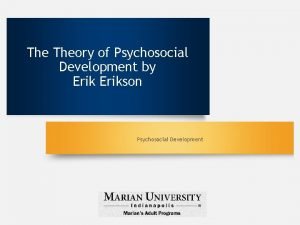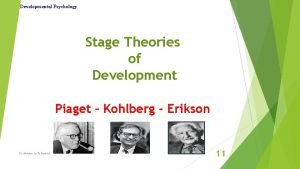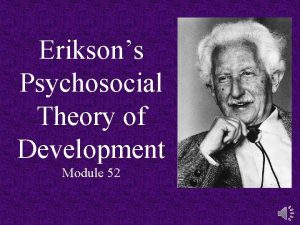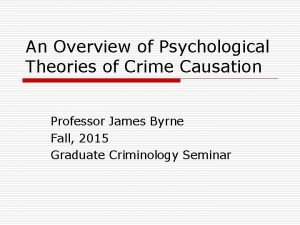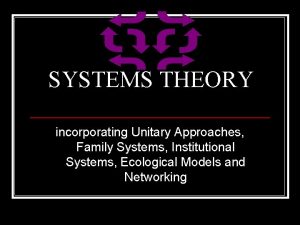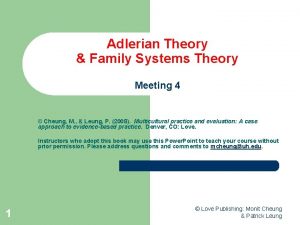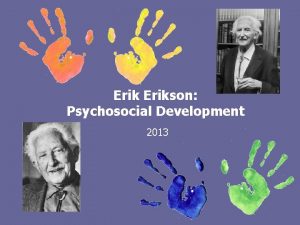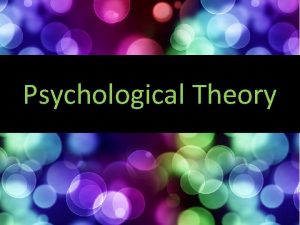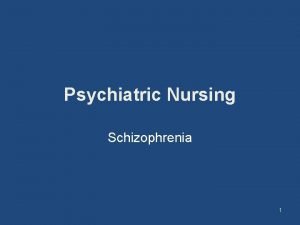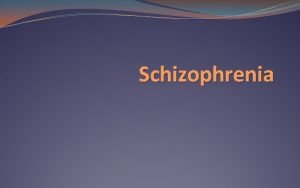Schizophrenia Psychological Theories Family systems theory Psychosocial environmental









- Slides: 9

Schizophrenia: Psychological Theories • Family systems theory Psychosocial & environmental stress sychlotron. org. •

Family Systems Theory Origins in: • The psychoanalytical tradition (the influence of the family on abnormal behaviour) • Systems thinking (idea that things are best understood by looking at the relationships between a set of entities) sychlotron. org. •

Family System F M C 1 C 3 C 2 The behaviour of each entity can only be understood by looking at its relationships with the others sychlotron. org. A family can be seen as a set of entities, each interacting with all the others.

Family System F M C 1 C 3 C 2 Their behaviour may be a manifestation of a problem occurring within the wider family system sychlotron. org. If one person starts to behave abnormally the problem might not lie within that person

Double Bind Theory (Bateson, 1956) Schizophrenia is a consequence of abnormal patterns in family communication • The patient is a ‘symptom’ of a family-wide problem • They become ‘ill’ to protect the stability of the family system sychlotron. org. •

Double Bind Theory In a double bind situation a person is given mutually contradictory signals by another person • This places them in an impossible situation, causing internal conflict • Schizophrenic symptoms represent an attempt to escape from the double bind sychlotron. org. •

Double Bind Theory Bateson (1956) reports clinical evidence (interviews, observations) illustrating use of double bind communication by parents of schizophrenia patients • Issues of researcher (confirmatory) bias • Problems with direction of causality sychlotron. org. •

Double Bind Theory Liem et al (1974) compared communication patterns in families with & without a schizophrenic member • Abnormality in parental communication was a response to the schizophrenic symptoms, not vice versa • Some issues with ecological validity sychlotron. org. •

Double Bind Theory Some evidence that family processes play a role in relapse of schizophrenia patients following stabilisation • Relapse more likely (58% vs. 10%) where family is high in ‘expressed emotion’ (Brown et al, 1966) • Families high in criticism, hostility & overinvolvement lead to more relapse (Vaughn & Leff, 1976) sychlotron. org. •
 Outline one psychological explanation of schizophrenia
Outline one psychological explanation of schizophrenia Psychosocial development
Psychosocial development Erickson's psychosocial theory of development
Erickson's psychosocial theory of development Psychology stages of development
Psychology stages of development Trust vs mistrust stage
Trust vs mistrust stage Psychological theories of crime
Psychological theories of crime Psychodynamic perspective of schizophrenia
Psychodynamic perspective of schizophrenia Pincus and minahan 1973 systems theory
Pincus and minahan 1973 systems theory Family systems theory powerpoint
Family systems theory powerpoint Engineering elegant systems: theory of systems engineering
Engineering elegant systems: theory of systems engineering

